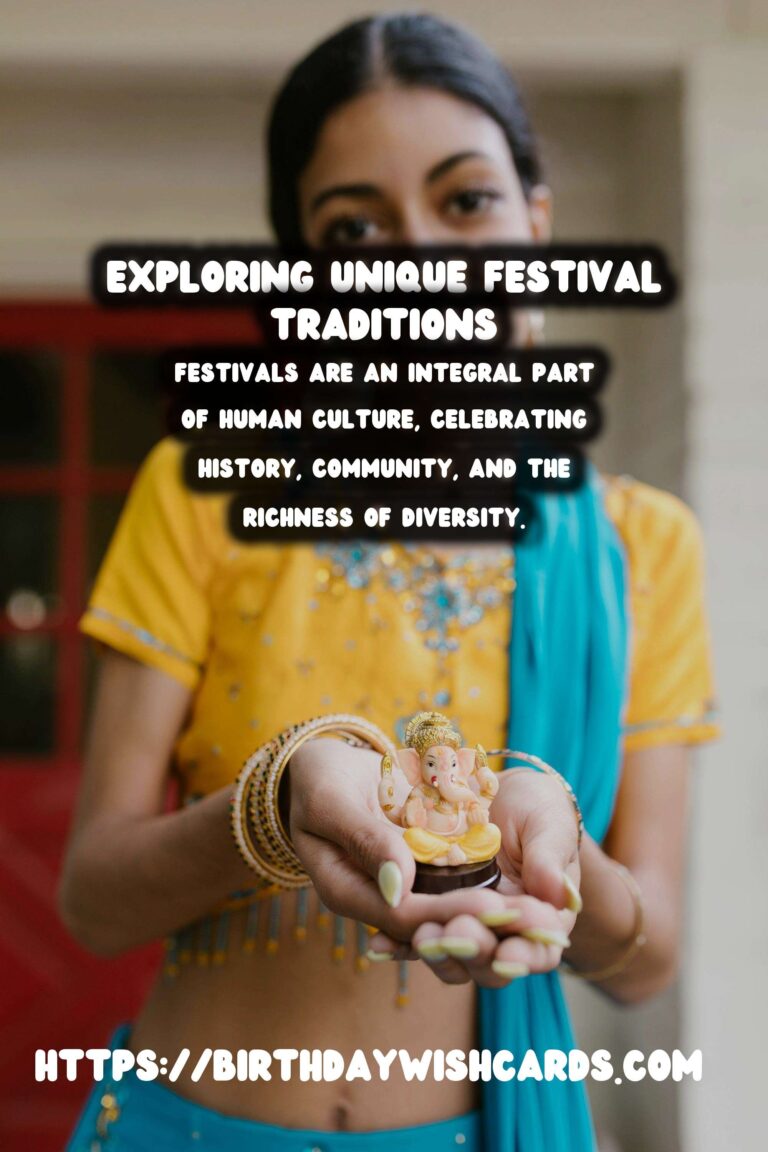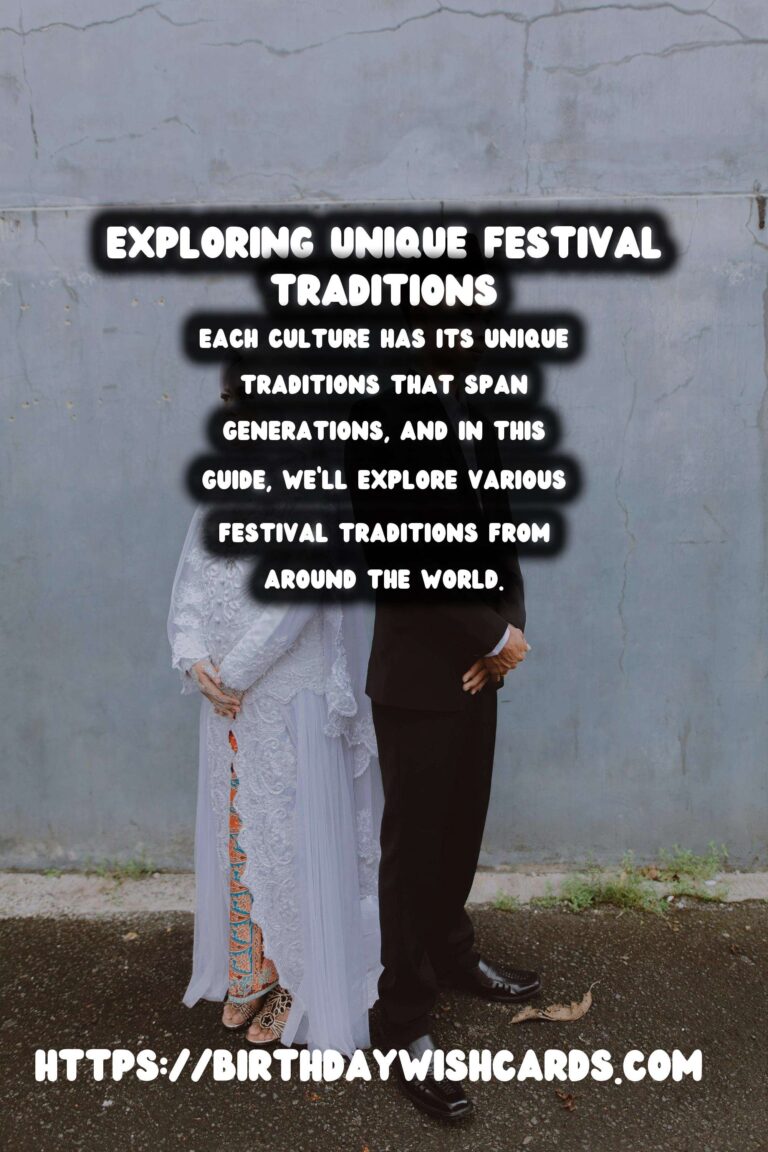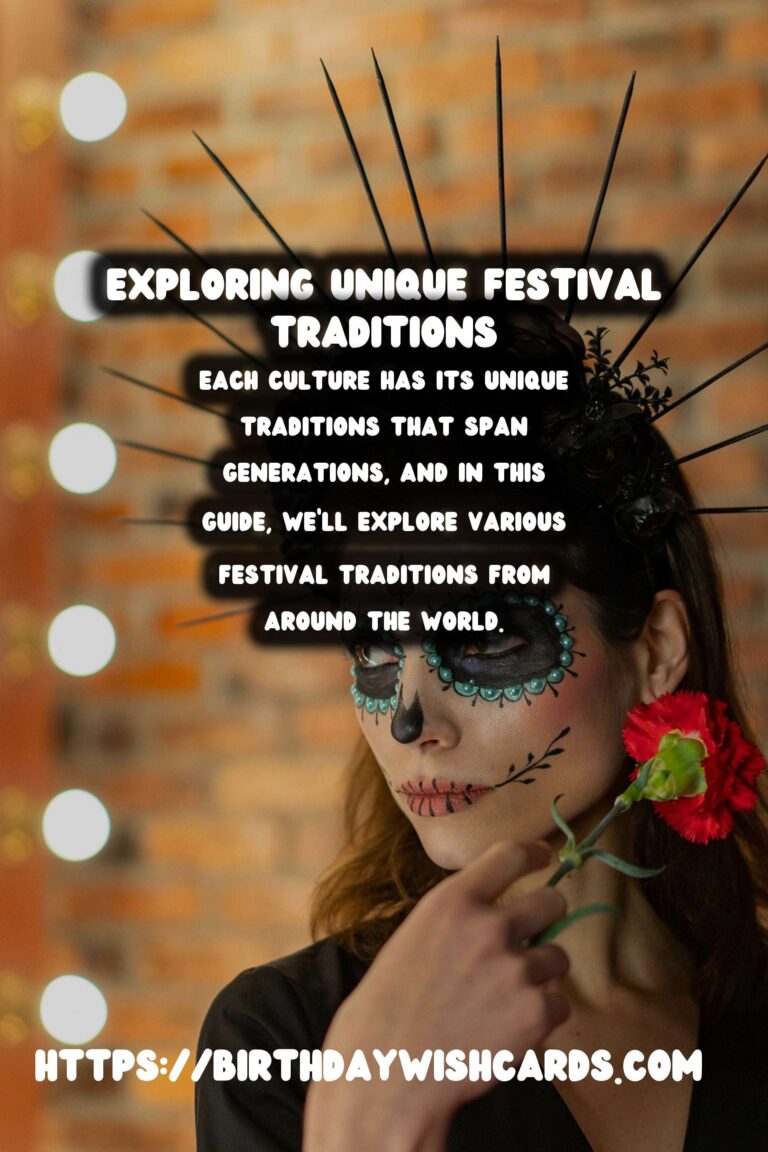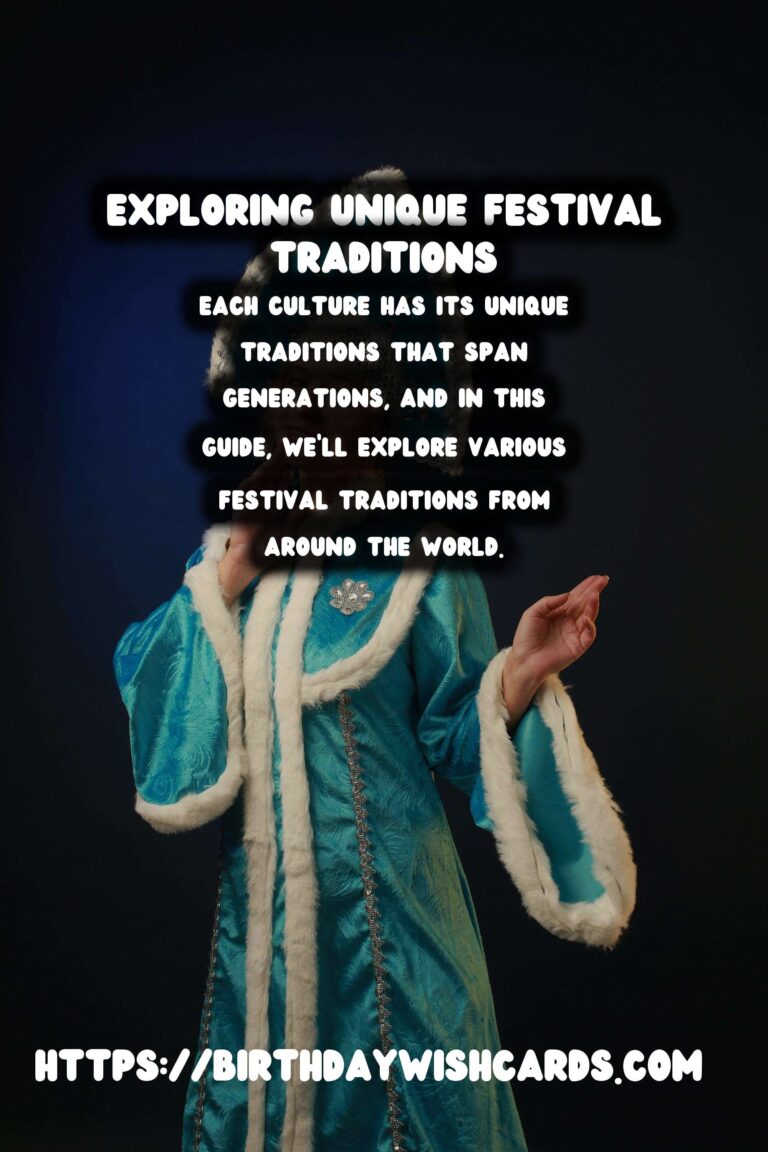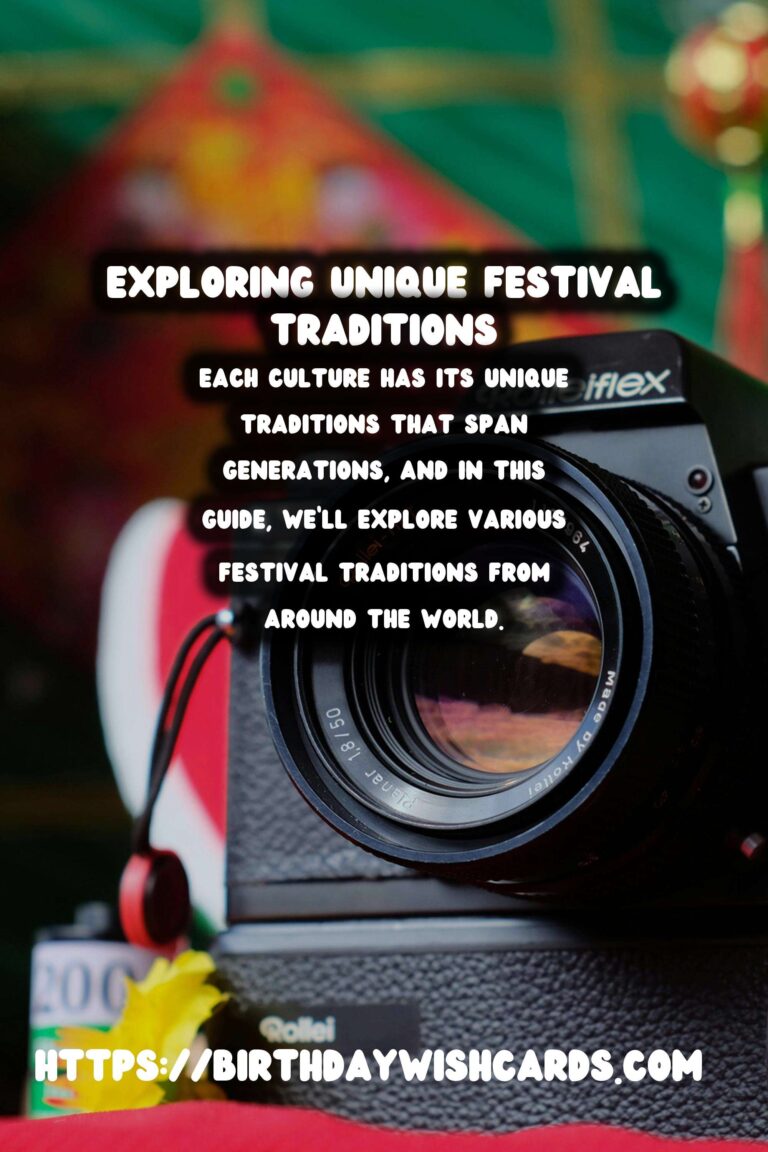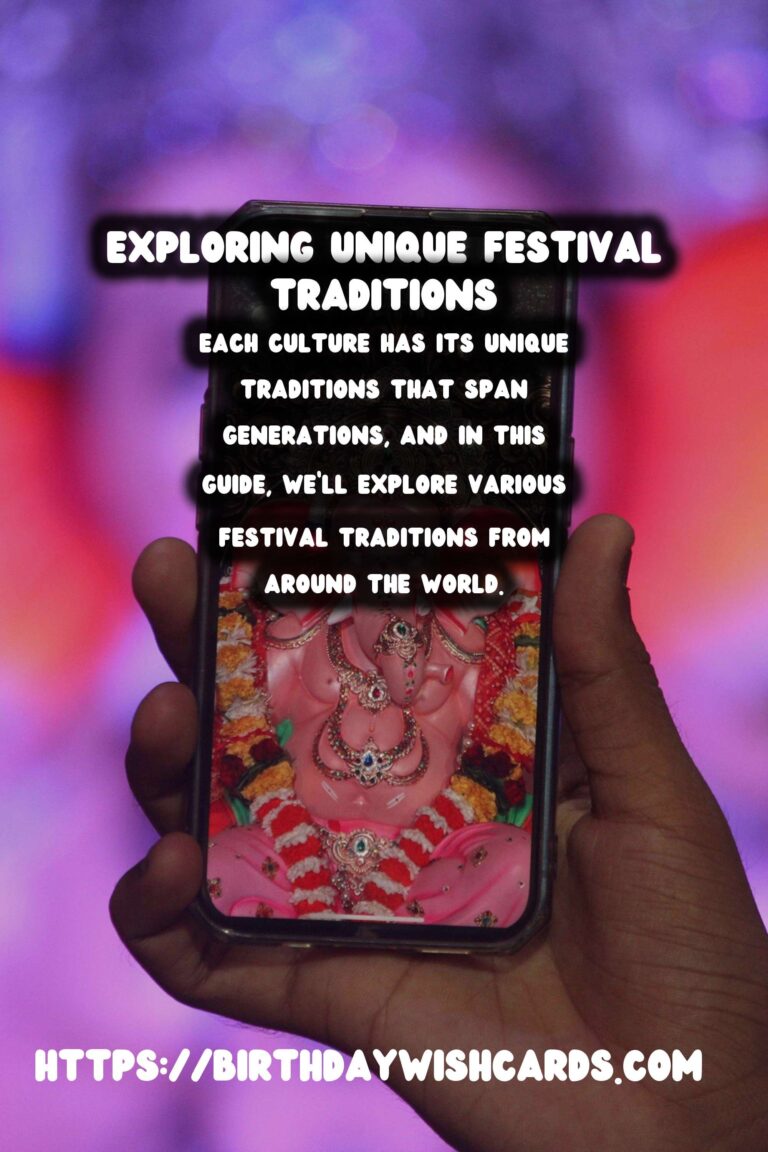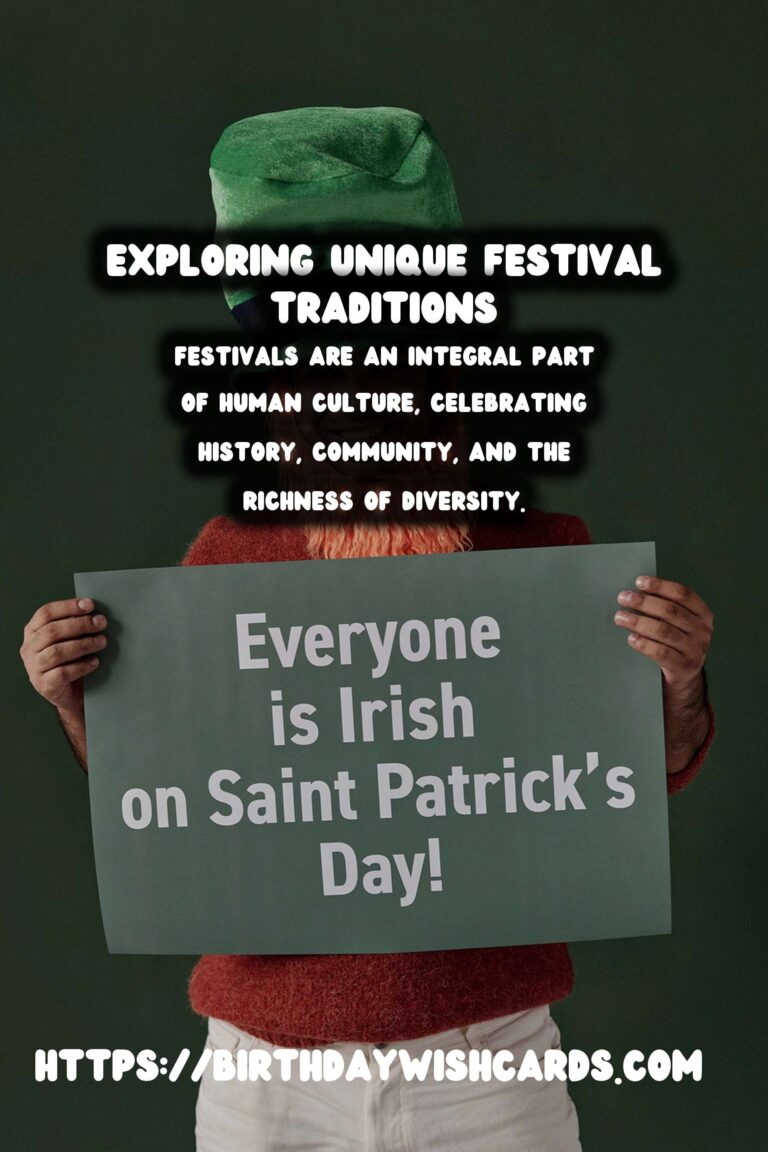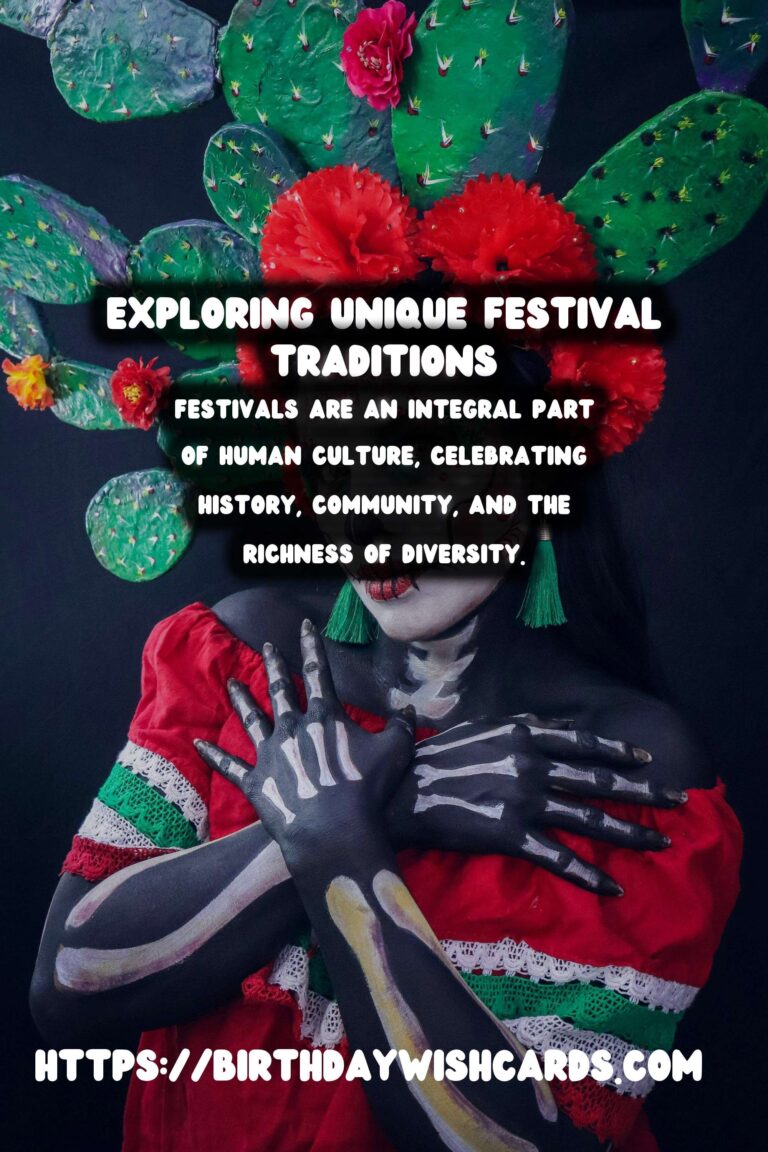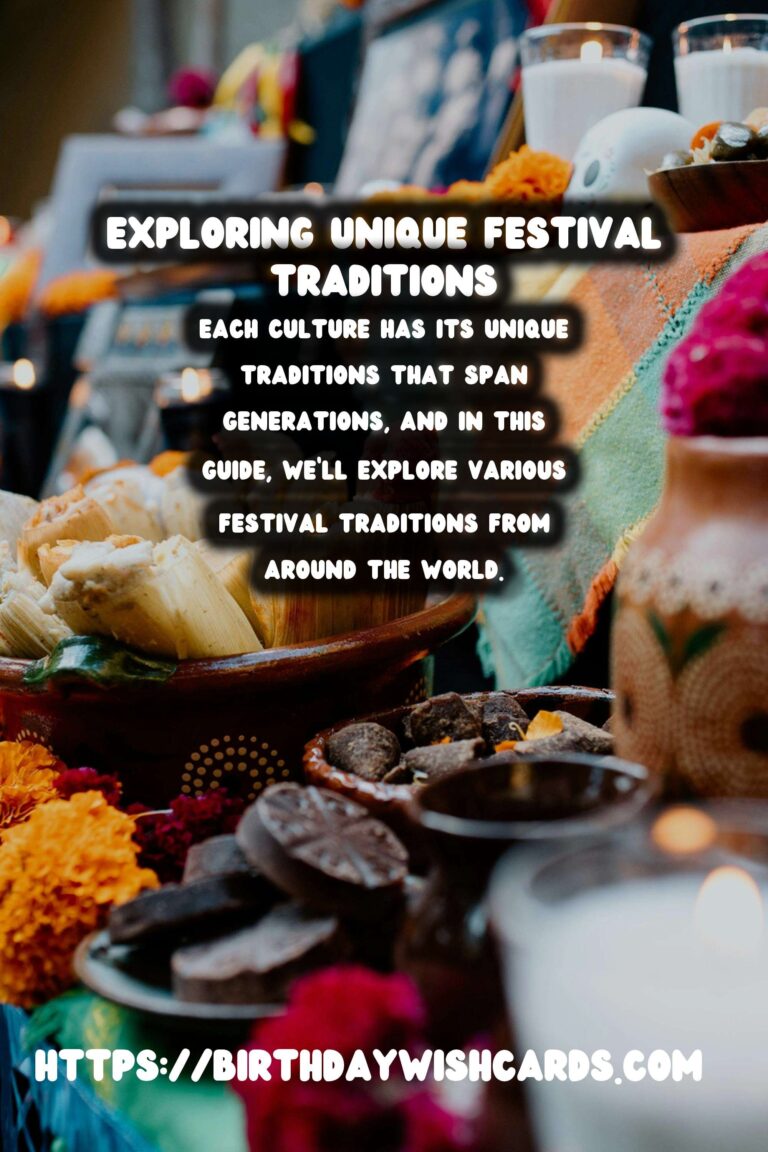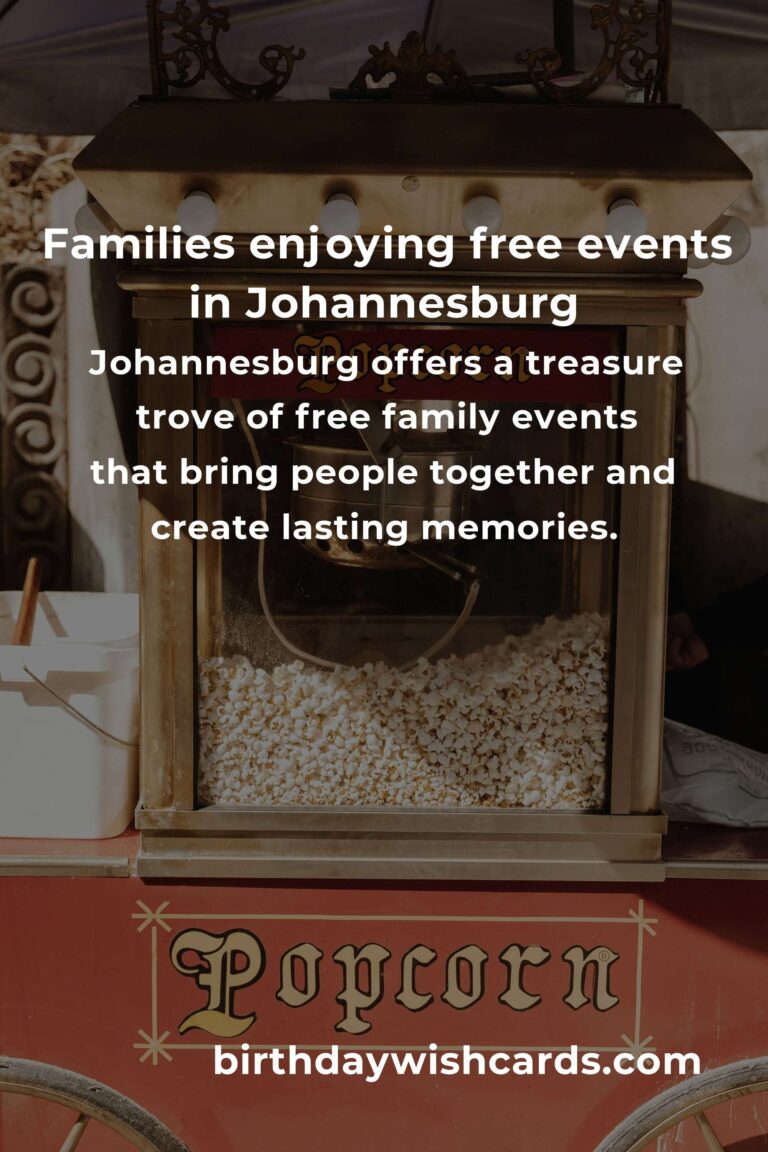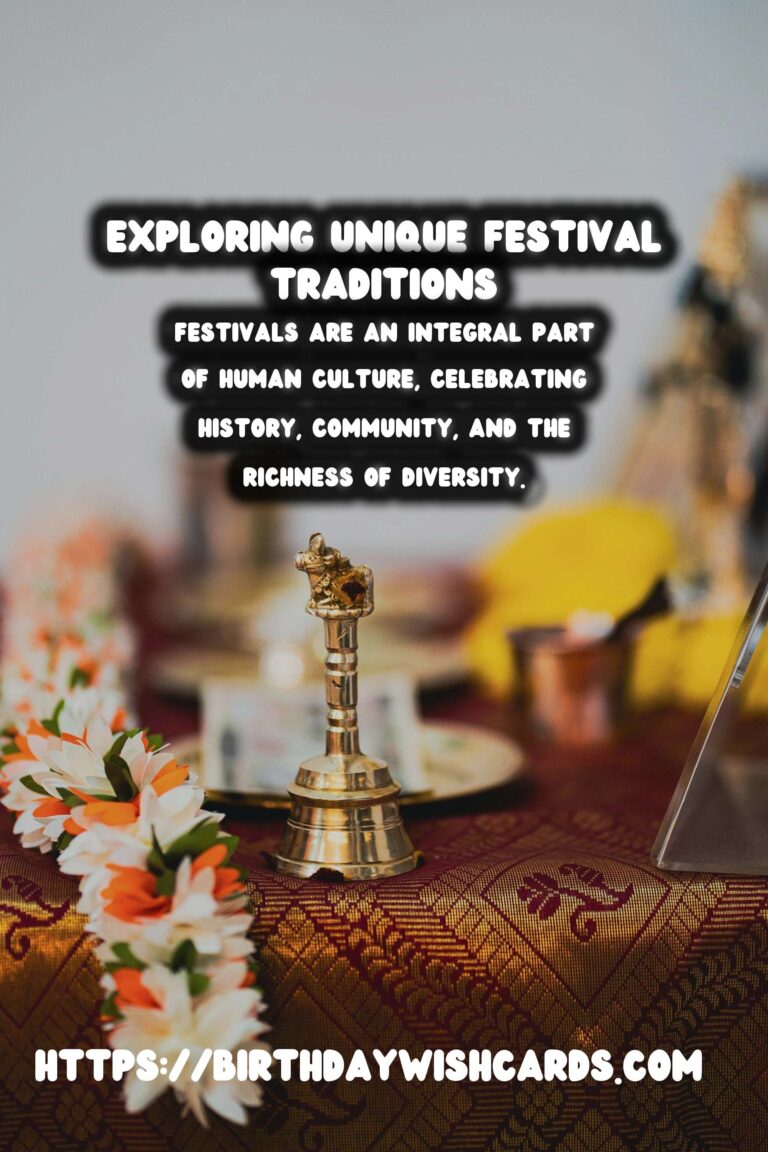
Festivals are an integral part of human culture, celebrating history, community, and the richness of diversity. Each culture has its unique traditions that span generations, and in this guide, we’ll explore various festival traditions from around the world.
1. Introduction to Festival Traditions
Festivals are occasions for communal gathering, rituals, and symbolically significant events, often encompassing music, food, and dance. Understanding the traditions behind these celebrations can enhance our appreciation for diverse cultures.
2. The Importance of Festivals
Festivals serve numerous functions: they commemorate historical events, foster community bonds, and provide opportunities for creative expression. They are celebrations of life, reflecting joy, spirituality, and even sorrow.
3. Common Elements of Festivals
Most festivals share common elements, such as:
- Rituals: Ceremonies that embody cultural significance.
- Food: Special dishes that represent the festival’s heritage.
- Music and Dance: Forms of expression that elevate the celebratory spirit.
- Wildlife and Nature: Many festivals are held in specific seasons, incorporating elements of nature.
4. Festival Traditions Around the World
4.1. Diwali – The Festival of Lights (India)
Diwali, celebrated by millions, signifies the victory of light over darkness. Families decorate their homes with diyas (oil lamps) and share sweets.
4.2. Carnival – A Celebration of Life (Brazil)
Carnival in Rio de Janeiro is famous for its vibrant parades and samba dancing. It celebrates Brazilian culture and invites millions to partake in its festivities.
4.3. Oktoberfest – A Toast to Bavarian Culture (Germany)
Held annually in Munich, Oktoberfest is a 16- to 18-day folk festival that connects people through traditional Bavarian beer, food, and music.
4.4. Lunar New Year – A Time for Renewal (China)
Lunar New Year is celebrated with family reunions, festive meals, and fireworks. It symbolizes the arrival of spring and good fortune.
4.5. Holi – The Festival of Colors (India)
Holi celebrates the arrival of spring, characterized by throwing colored powders, symbolizing joy and love while fostering unity.
4.6. Thanksgiving – A Day of Gratitude (USA)
Thanksgiving is a time for families to come together and give thanks for the harvest, featuring traditional meals and expressions of gratitude.
5. How to Experience Festivals
Experiencing festivals can be more than just attending; it involves immersing yourself in the atmosphere. Here are steps to effectively participate:
5.1. Research the Festival
Understanding the significance behind the festival allows for a deeper appreciation. Read about its history, traditions, and customs.
5.2. Participate in Preparations
Engaging in pre-festival activities can be enriching. This could include helping to decorate, cooking traditional dishes, or learning specific dances.
5.3. Respect Local Customs
Every festival has its own set of rules. Respecting local customs and traditions is crucial to enjoying the experience without misunderstanding.
5.4. Capture the Moment
Bring a camera to capture the vibrant moments. Photograph not only grand spectacles but also intimate interactions and communal activities.
6. Conclusion
Festivals are vibrant expressions of culture that bring communities together and allow us to celebrate our shared human experiences. Whether participating in Diwali’s lights or enjoying Brazil’s Carnival, each festival teaches us the importance of joy, gratitude, and unity.
Festivals are an integral part of human culture, celebrating history, community, and the richness of diversity. Each culture has its unique traditions that span generations, and in this guide, we’ll explore various festival traditions from around the world. 
